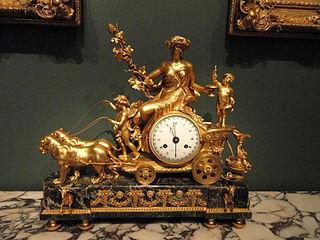 W
WNoël Bourret was a celebrated French clockmaker and businessman active in Paris from 1785-1803.
 W
WAbraham-Louis Breguet, born in Neuchâtel, then a Prussian principality, was a horologist who made many innovations in the course of a career in watchmaking in France. In his lifetime he was considered the leading watchmaker of his day, and he built up a clientele that included many leading public figures and members of the European nobility.
 W
WArmand Couaillet (1865–1954) was a French clock maker from Saint-Nicolas-d'Aliermont in Normandy.
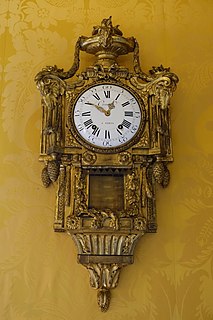 W
WAntoine Cronier, or Crosnier, was a noted clockmaker active during the second half of the 18th century in Paris, France.
 W
WHenri-Eugène-Adrien Farcot was a French clock-maker, industrialist, inventor, mechanical-engineer, aeronaut, occasional writer and one of the most celebrated conical pendulum clock makers.
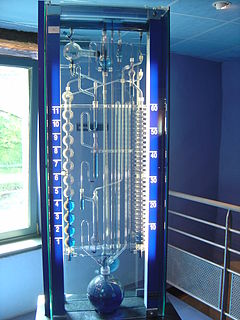 W
WBernard Gitton ; born 24 June 1935) is a French physicist and artist who has built modern water clocks, fountains and other devices relating art and science.
 W
WAntide Janvier was a French clockmaker.
 W
WJulien Le Roy (1686-1759) was a major 18th-century Parisian clockmaker and watchmaker.
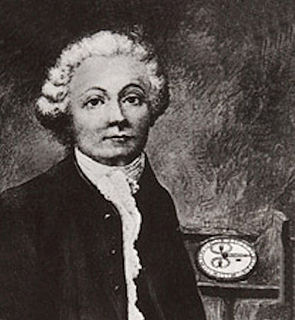 W
WPierre Le Roy (1717–1785) was a French clockmaker. He was the inventor of the detent escapement, the temperature-compensated balance and the isochronous balance spring. His developments are considered as the foundation of the modern precision clock. Le Roy was born in Paris, eldest son of Julien Le Roy, a clockmaker to Louis XV who had worked with Henry Sully, in which place Pierre Le Roy succeeded his father. He had three brothers: Jean-Baptiste Le Roy (1720-1800), a physicist; Julien-David Le Roy (1724–1803), an architect; and Charles Le Roy (1726–1779), a physician and encyclopédiste.
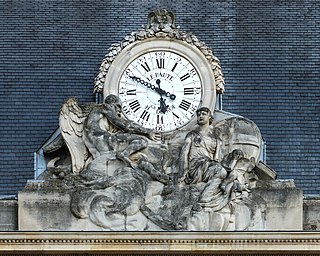 W
WJean-André Lepaute, together with his younger brother Jean-Baptiste Lepaute, was a founder of an outstanding French clockmaker dynasty of their day, holding the brevet horlogers du Roi. His brother assumed his workshop in 1774, when Jean-André retired; he died after a long illness at Paris.
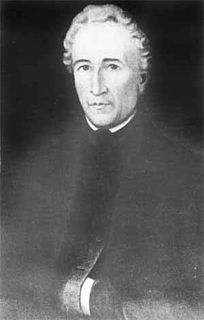 W
WJean-Antoine Lépine, born as Jean-Antoine Depigny, was an influential watchmaker. He contributed inventions which are still used in watchmaking today and was amongst the finest French watchmakers, who were contemporary world leaders in the field.
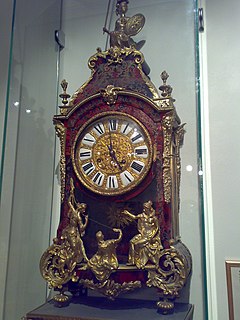 W
WBalthazar Martinot (1636–1714) was a French clockmaker, and valet de chambre of the queen and of the King.
 W
WPierre de Rivaz was a French clockmaker of the 18th century, from Saint-Gingolph. He built a clock in 1740 that was powered by variations in air temperature and pressure, a type of Atmos clock.
 W
WJean-Baptiste Schwilgué was the author of the third astronomical clock of Strasbourg Cathedral, built between 1838 and 1843 . In 1844 Schwilgué, together with his son Charles, patented a key-driven calculating machine, which seems to be the third key-driven machine in the world, after that of Luigi Torchi (1834) and James White (1822).
 W
WAntoine Thiout the elder was a French clockmaker. He wrote Traité de l'horlogerie mechanique et pratique, a treatise on clockmaking which was widely read in his time. His plates describe clock and watch mechanisms which were often used in 18th century timepieces: for example a verge escapement powered by a spring encased in a barrel, and a regulation based on a cone-shaped fusee.